
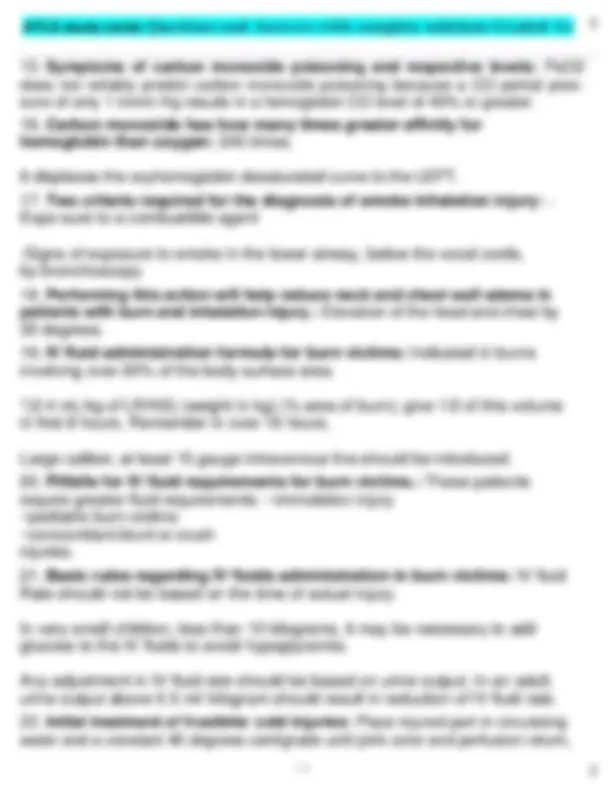
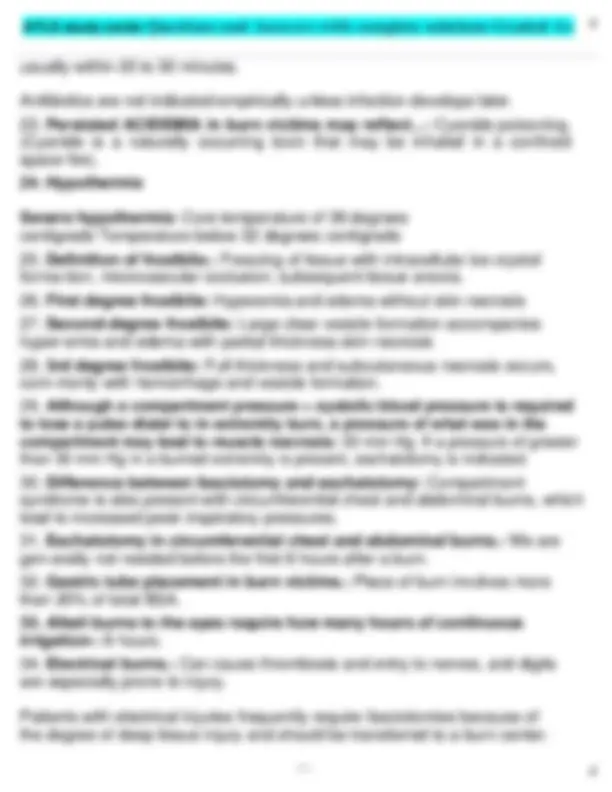
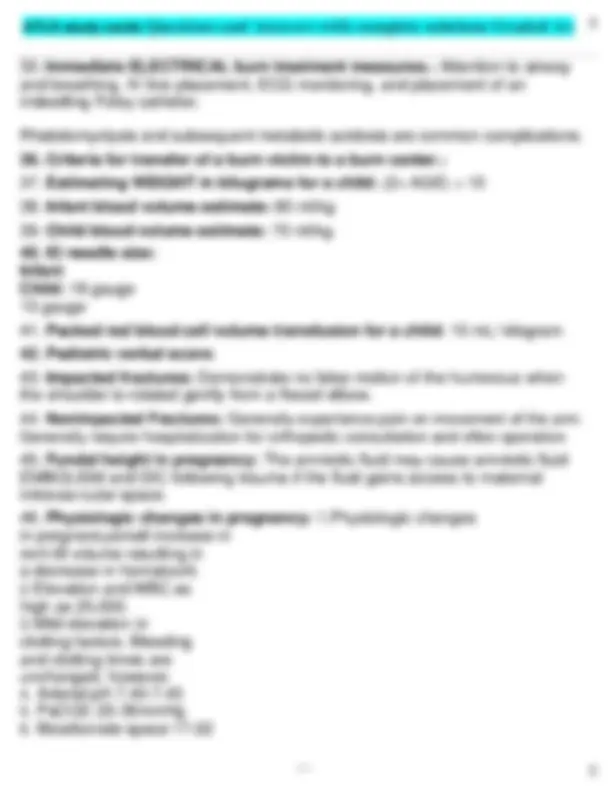
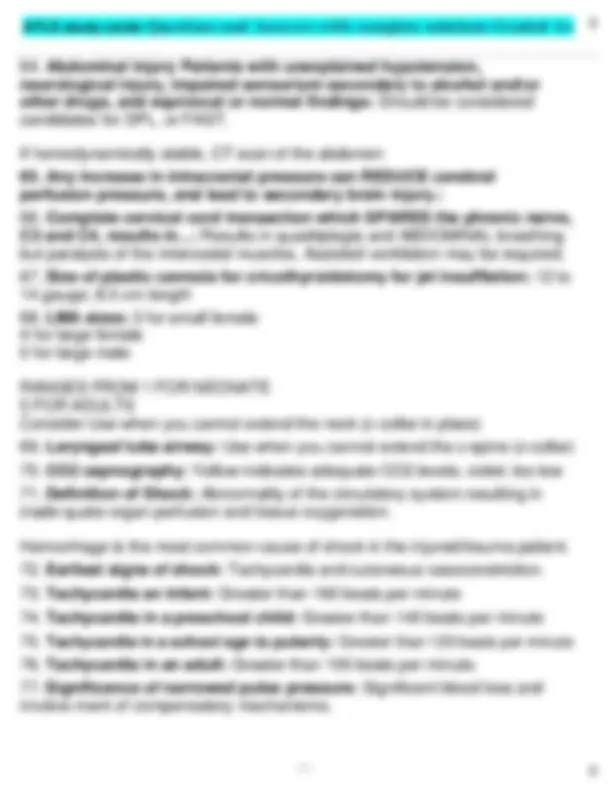
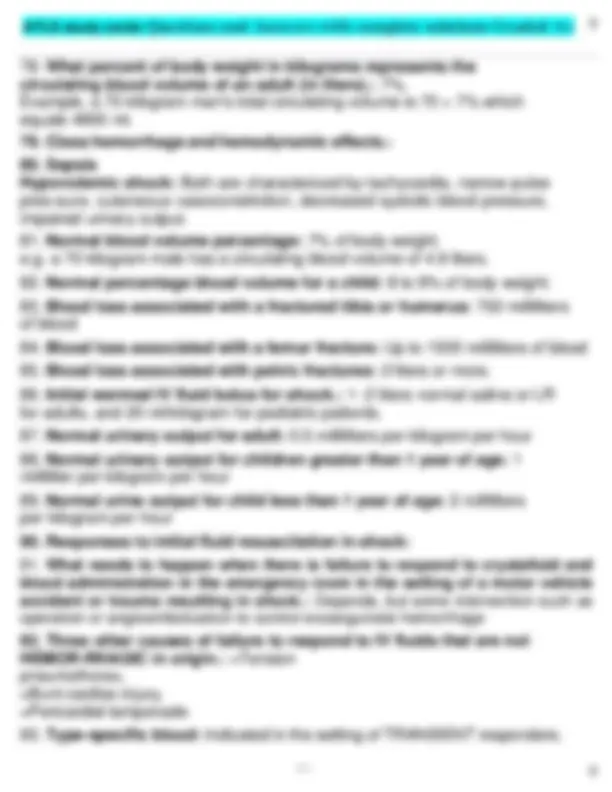
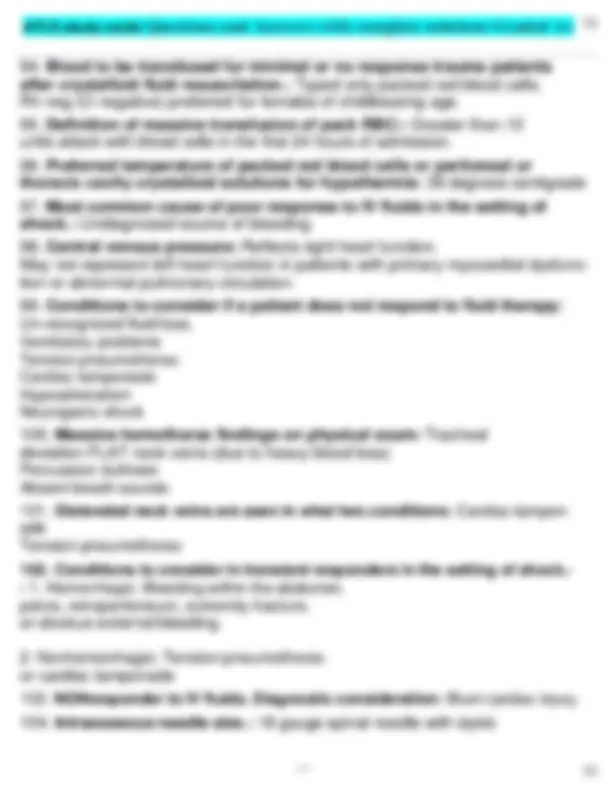
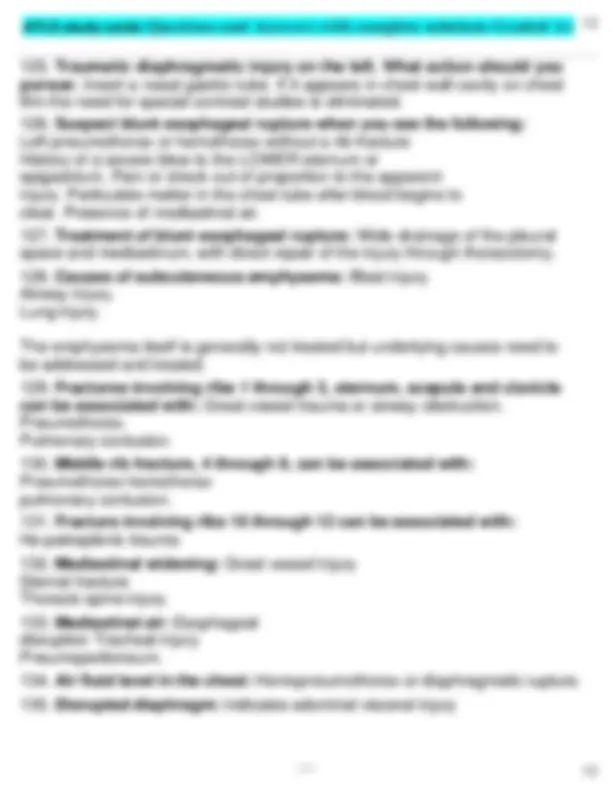
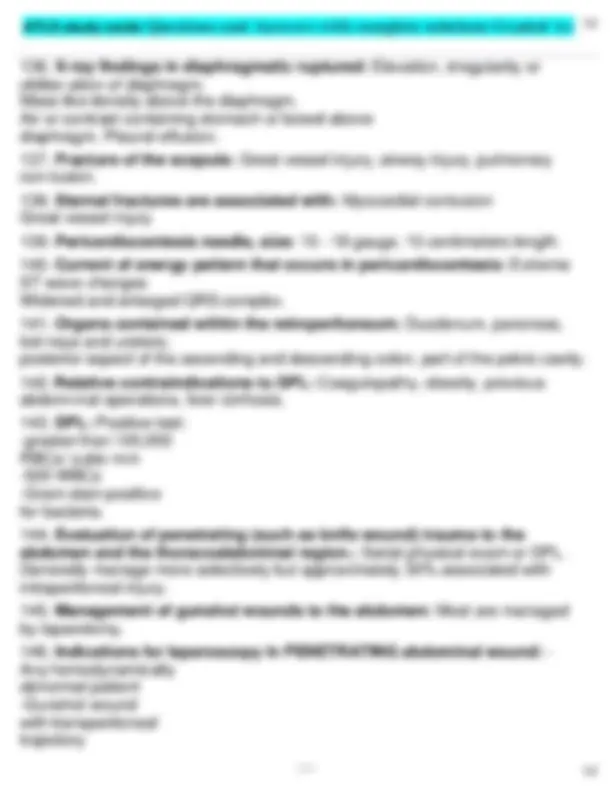
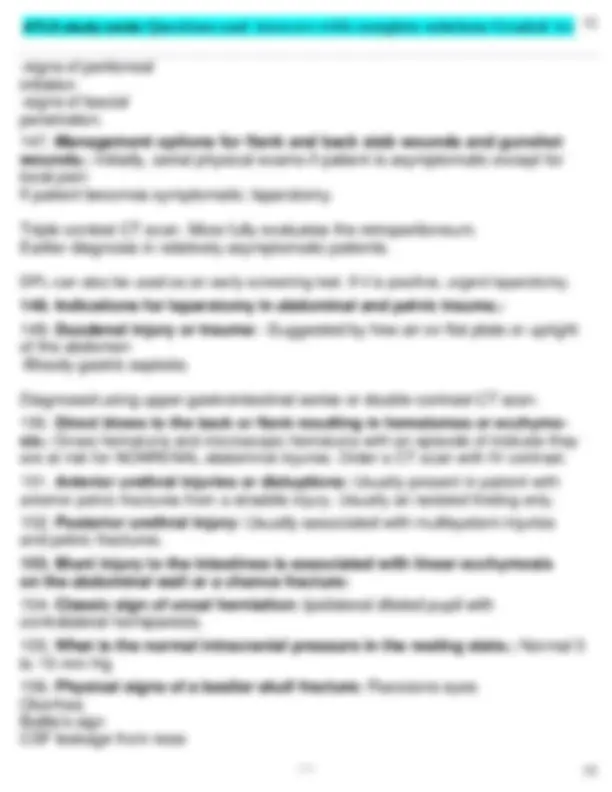
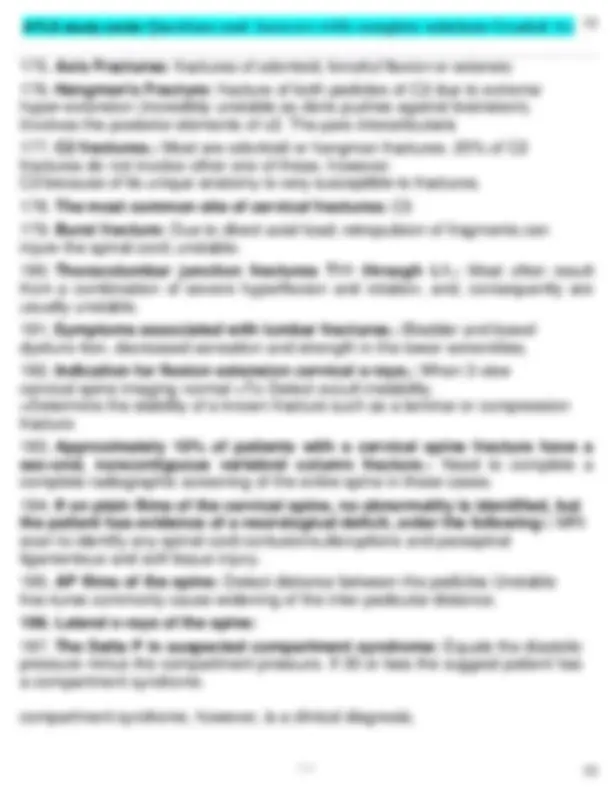
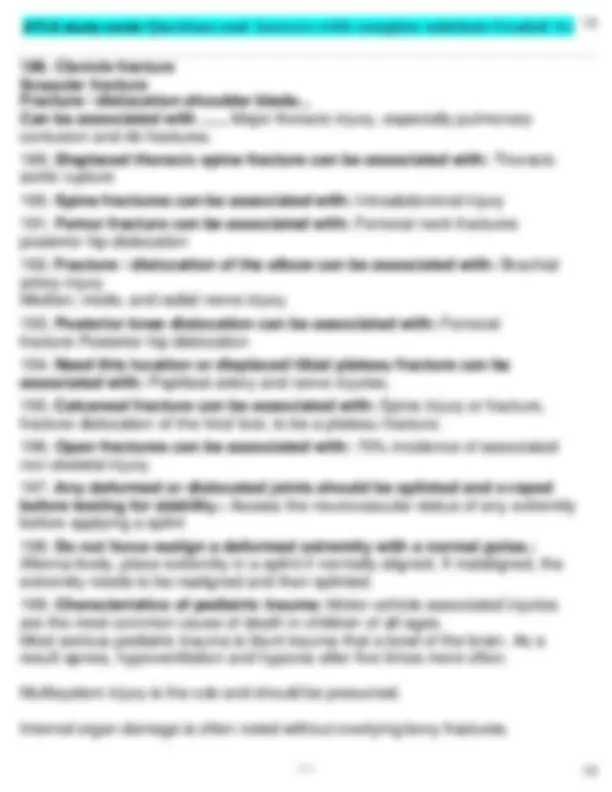
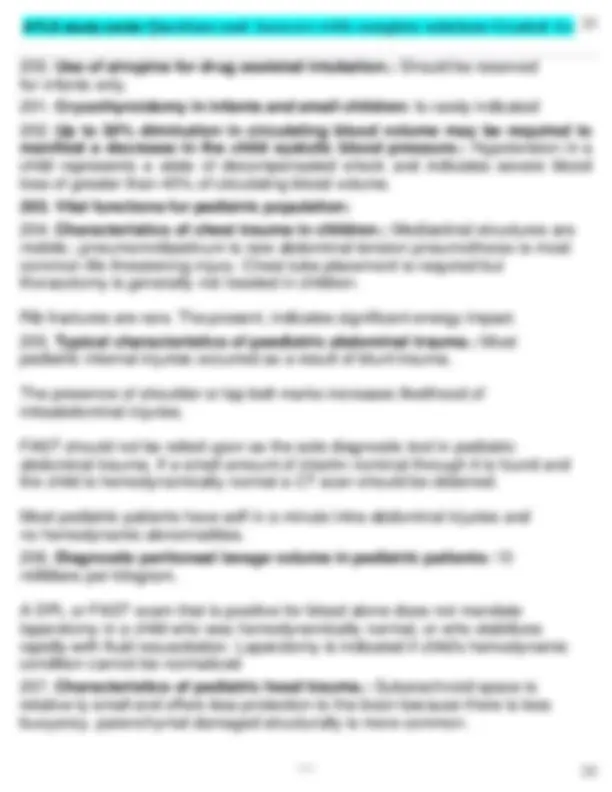
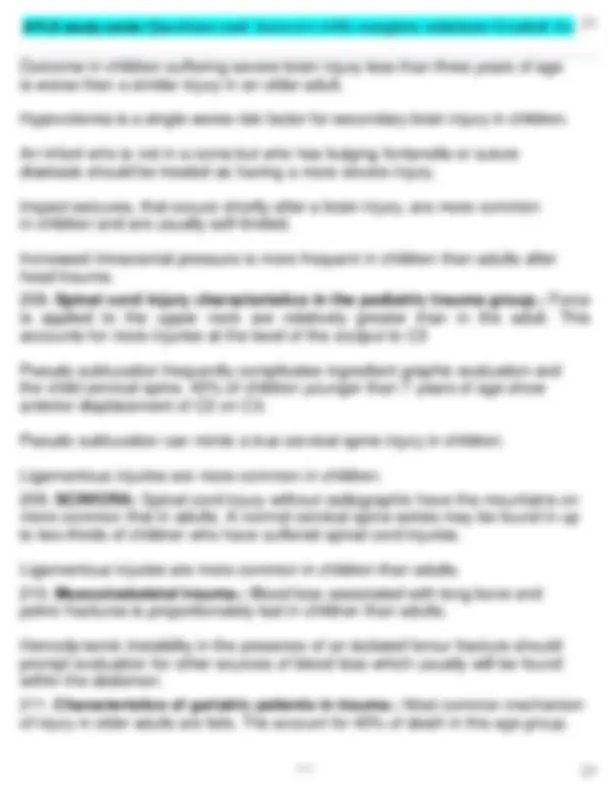
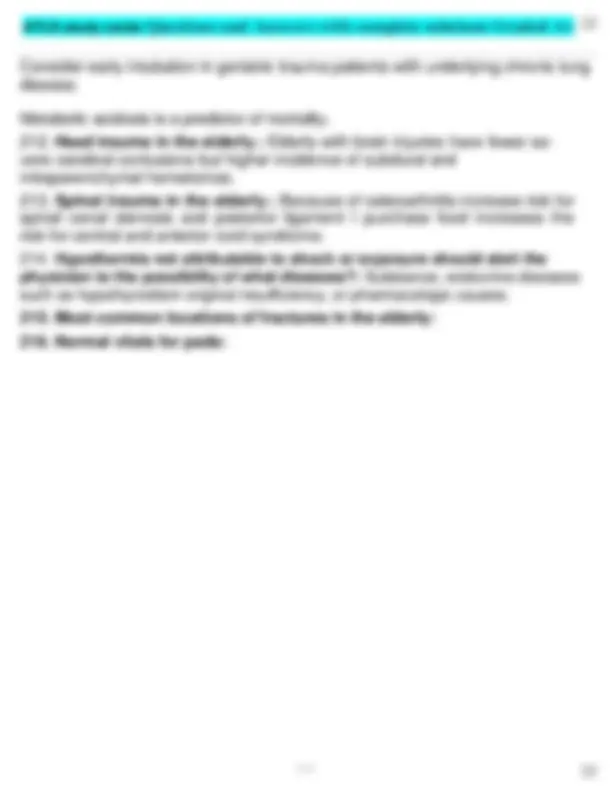


Study with the several resources on Docsity

Earn points by helping other students or get them with a premium plan


Prepare for your exams
Study with the several resources on Docsity

Earn points to download
Earn points by helping other students or get them with a premium plan
Community
Ask the community for help and clear up your study doubts
Discover the best universities in your country according to Docsity users
Free resources
Download our free guides on studying techniques, anxiety management strategies, and thesis advice from Docsity tutors
A concise review of key concepts from advanced trauma life support (atls) guidelines, focusing on the initial assessment and management of trauma patients. It covers essential topics such as airway management, breathing, circulation, disability assessment, and exposure prevention. Specific areas include the glasgow coma scale, fracture types, burn management (including the rule of nines and fluid resuscitation), hypothermia, frostbite, electrical burns, and considerations for pregnant trauma patients. Structured as a series of questions and answers, making it a useful study aid for medical professionals preparing for atls certification or seeking a quick review of trauma management principles. It also includes pediatric considerations and specific injury patterns associated with different mechanisms of trauma.
Typology: Exams
1 / 22

This page cannot be seen from the preview
Don't miss anything!















1. Glasgow Coma Scale:
3 / usually within 20 to 30 minutes. Antibiotics are not indicated empirically unless infection develops later.
4 /
6 /
56. Frontal impact automobile collision: Bent steering wheel, Knee imprint dashboard Bulls eye fracture windshield: Cervical spine fracture Anterior flail chest Myocardial contusion Pneumothorax Traumatic aortic disruption Fractured spleen or liver Posterior fracture/dislocation of hip and/or knee
7 /
9 /
10 /
12 /
13 /
15 /
157. Definition of MINOR traumatic brain injury GCS in 13 and 15: History of disorientation, and amnesia, or transient loss of consciousness in a patient who is conscious and talking. 158. CT scan indicated in the setting of minor traumatic brain injury (GCS 13 - 15) when the following are seen:: *GCS of less than 15 two hours after injury *Suspected open or depressed skull fracture *Any signs of basilar skull fracture *Vomiting more than 2 episodes *Age more than 65 years *Loss of consciousness more than five minutes *More than 30 minutes amnesia before impact *Dangerous mechanism of trauma
16 / *Absent brainstem reflexes (Doll's eyes, corneal, gag reflexes) *No spontaneous ventilatory effort on formal apnea testing
18 /
188. Clavicle fracture Scapular fracture Fracture / dislocation shoulder blade... Can be associated with ...... Major thoracic injury, especially pulmonary contusion and rib fractures.
19 /